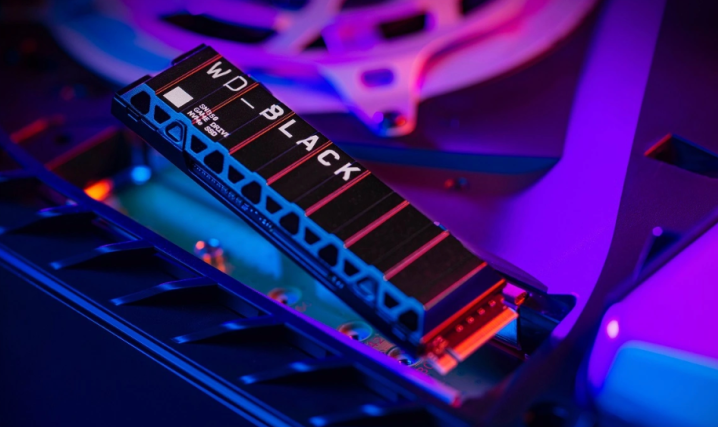 WD
WD
Picking the best solid-state drive (SSD) for your needs seems easy on the surface. Even when you dig a little deeper, it’s still not as hard as choosing the right motherboard or graphics card. However, it’s also very easy to make a mistake and waste money on a drive that’s faster than your system can use. Or you could end up wishing you’d spent a few dollars more for vastly better performance.
How to make sense of PCIe versus SATA? How big an SSD do you really need? What kind of read/write speeds should you be looking for? We’re here to demystify the process and help you choose the drive that works for you. Read on for a comprehensive guide on how to buy an SSD.
SATA or NVMe?

You might think that buying an SSD starts with choosing the amount of storage you need, but your main consideration should actually be the form factor. No one builds an entire PC around an SSD, so you’ll most likely have already selected a motherboard, a processor, and a graphics card before you ever think about the SSD. The processor and the motherboard you choose will play into the kind of SSD that’s available to you: SATA or NVMe.
SATA stands for Serial Advanced Technology Attachment, and it’s an aging interface that some SSDs utilize to transfer data and communicate with the computer. NVMe, on the other hand, stands for Non-Volatile Memory Express, and it’s a protocol that was designed specifically for SSDs to help them maximize the potential of NAND flash memory. While SATA was developed with spinning hard drives (HDDs) in mind, NVMe was engineered specifically to keep up with the demands of speedy, low-latency SSDs.
NVMe drives operate over the PCIe interface, which provides multiple lanes for data transmission. That makes them significantly faster than SATA drives, which is the main takeaway here. A typical SATA SSD may have read/write speeds of around 500MB/s, but new NVMe SSDs operating on the PCIe 4.0 interface can hit 7,000MB/s and more. That’s huge, and you will absolutely notice the difference in day-to-day use.
However, whether you can have a SATA or an NVMe SSD depends on your motherboard and the form factor that it supports.
SATA
SATA SSDs most commonly utilize the 2.5-inch form factor. They look a bit like really thin HDDs that you’d find in laptops years ago. They use the same power connector as a typical HDD would and fit in the same drive bays in desktops and laptops. While they’re nowhere near as fast as NVMe SSDs, they still provide a sizeable upgrade over a traditional HDD, so if your PC only supports SATA, it’s still a worthwhile purchase.
NVMe

In consumer PCs, most NVMe SSDs utilize the M.2 form factor, although add-in cards (AICs) are also a far less common option. U.2 SSDs exist, too, but you’ll hardly ever see them outside of enterprise desktops.
NVMes are so small and thin compared to SATA drives that they live right on the motherboard in an M.2 slot, with no cables needed. Modern motherboards usually come with at least one M.2 slot, but the best motherboards serve up several, allowing for more storage.
PCIe 3.0 or PCIe 4.0
Outside of the form factor, PCIe 3.0 and PCIe 4.0 also play a part in your pick. If you pick a drive that supports the faster PCIe 4.0 standard, you’ll need a motherboard to match. You’ll need an X570 or B550 (or newer) motherboard for AMD or an Intel Z590 motherboard (or newer) in order to unlock the maximum speeds offered by PCIe 4.0. Motherboards that only support PCIe 3.0 can still run those SSDs, but the speed will be cut in half to the maximum read/write speeds supported by PCIe 3.0.
If you’re not sure which interface your motherboard supports, your best bet is to look through its specifications. If it’s old enough to only support PCIe 3.0, you might as well look for an older PCIe 3.0 SSD to match. But if you don’t see any bargains, it might be cheaper to just buy a newer SSD and make peace with not using its full speed. It’s also better for future-proofing your PC.
Which one to pick?
The answer is simple: If your PC supports it, definitely go with an NVMe SSD. The prices are pretty even these days, and the improvement in read and write speeds is massive. If you’re a casual user, you can still get away with SATA, but people who enjoy gaming, video editing, encoding, or any other resource-heavy task will certainly notice and appreciate the upgrade.
Storage
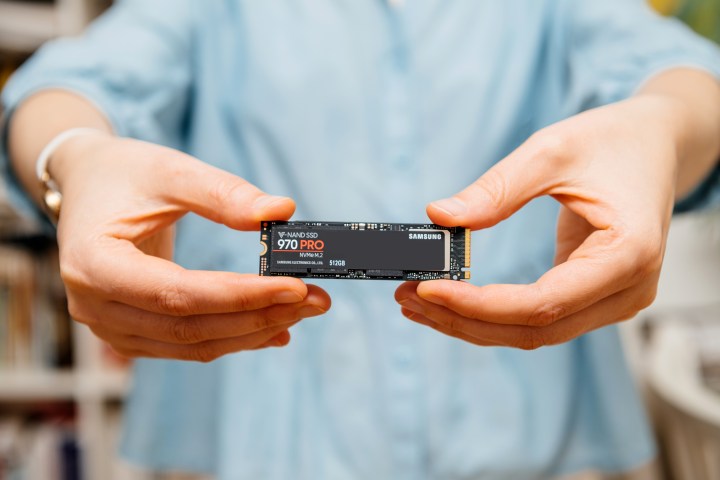
Once you’ve picked the form factor and the interface, your next decision will be simple — how much capacity do you need your SSD to have? The answer depends on what you’re going to use your PC build or laptop for.
In thin and light laptops, smaller SSDs are still very common. You might often see laptops with 128GB or 256GB of storage, but these days, you should aim for more storage unless you have no other choice. Just installing Windows 11 takes up roughly 30GB of space (though Microsoft requires at least 64GB of free space). The remaining 100GB of a 128GB SSD may feel like a lot, but it fills up quickly, especially if it’s your only means of storage.
In general, it’s best to start your SSD shopping adventure at 512GB and no less than that, unless you’re really worried about the budget. You can find a 512GB SSD for as little as $20, and 128GB SSDs hardly ever go under $15, so it really almost makes no sense to buy anything smaller than 512GB at this point.
However, power users will need even more. If you’re a gamer or tend to use your PC for heavy workloads, such as content creation or video editing, 1TB is pretty much the gold standard right now, and 2TB options are a significant upgrade without adding a lot of additional strain to your wallet.
Anything more than 2TB is only worth considering if you already know how you’re going to use the space. There’s no need to future-proof with obscene amounts of storage because you can always upgrade in the future, and if your motherboard supports it, you can add an extra SSD down the line.
With that said, 4TB and even 8TB SSDs are available at much higher prices if you really need them. But consider whether you need SSD speed at that size. You might be better off just getting an HDD if you’re purely using it for deep storage.
Durability
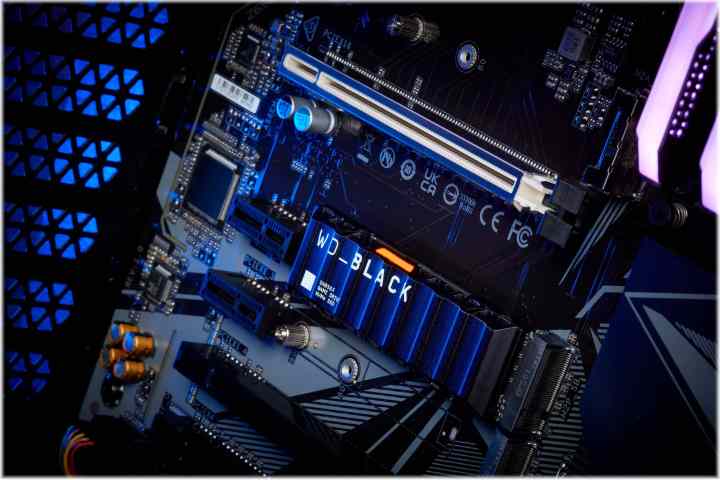
An SSD’s durability and endurance aren’t determined by its build quality, but rather by metrics like terabytes written (TBW) and mean time to failure/mean time between failures (MTTF/MTBF).
TBW is a measure used to describe the total amount of data that your SSD can handle before it starts to fail. Every time you save, delete, or modify files on an SSD, a little bit of its initial TBW estimate gets used up. Every SSD comes with its own TBW estimate, because the volatile NAND flash memory cells inside begin to degrade after a certain amount of write cycles. However, this doesn’t mean that your SSD will definitely fail by the time you reach the estimated TBW. Some SSDs will fail long before that; most will still function even if you somehow hit that cap.
The caps are fairly high for consumer SSDs and tend to go up based on the capacity. For instance, the Samsung 870 Evo has 2,880 TBW for the 8TB model, but only 360TB for the 1TB. Keep in mind that NVMe SSDs generally offer higher TBWs. Average users shouldn’t sweat this metric much. Even if you owned a drive with a modest 300 TBW and wrote 100GB per week, it would take 50 years before reached the theoretical life of the drive.
The MTTF/MTBF metrics are kind of similar in the sense that they give you an idea of the expected life span of your SSD, but these metrics are focused on hours. It basically means how long an SSD can run before it experiences failure. Realistically, you’ll probably never reach the MTTF of an SSD before upgrading your PC, as some of the newer NVMe drives have around 1 million to 2 million hours.
While this isn’t something most users think about when shopping, it can be worth considering if you know you’re looking for something that’ll stay reliable for a long time. Remember, though, that any component in a PC can fail regardless of expectations, which is why backing up your data is so important.
Read/write speeds

Outside of the form factor, read/write speeds are the specification in an SSD that’s the easiest to accidentally mess up on. The general idea is that SSDs are widely perceived as the faster option (which is true), and that might sometimes lead people to buy a slower PCIe 3.0 SSD, or even a SATA SSD, without checking the read/write speeds. However, checking that single metric instantly tells you what type of SSD you’re looking at.
Read speed represents how quickly your SSD can fetch data when it’s requested. Write speed is the inverse, and is how fast your SSD can save or store new data. In an SSD, you’ll usually see these speeds measured in megabytes per second (MB/s).
Faster read speeds make using your PC a much more pleasant affair. You’ll notice quicker system boot times, less time sitting at loading screens in games, and programs that launch faster. This is why, when switching from an HDD to an SSD, you’ll get that initial “wow” sort of feeling — it’s a massive difference. Write speeds can be useful if you transfer or save files on your PC. Put together, read/write speeds have a significant impact on how your entire computer runs.
As mentioned above, typical SATA SSDs max out at around 500MB/s to 600MB/s, with some variety between read/write speeds. PCIe 3.0 SSDs offer up to 3,500MB/s in read speeds, while PCIe 4.0 can go over 7,000 MB/s. The latest generation, meaning PCIe 5.0, is expected to deliver theoretical read speeds of up to 14,000MB/s, but those are still few and far between, and may require an extra cooler.
Ultimately, the read/write speeds of your SSD will largely be determined by the form factor. Buying the latest PCIe 4.0 SSD means the fastest read/write speeds, but those drives are pricier and require newer hardware to run at their highest speed. When you shop for an SSD, always make sure to check the spec sheet and aim for the highest read/write speeds available to you in that form factor.
Budget
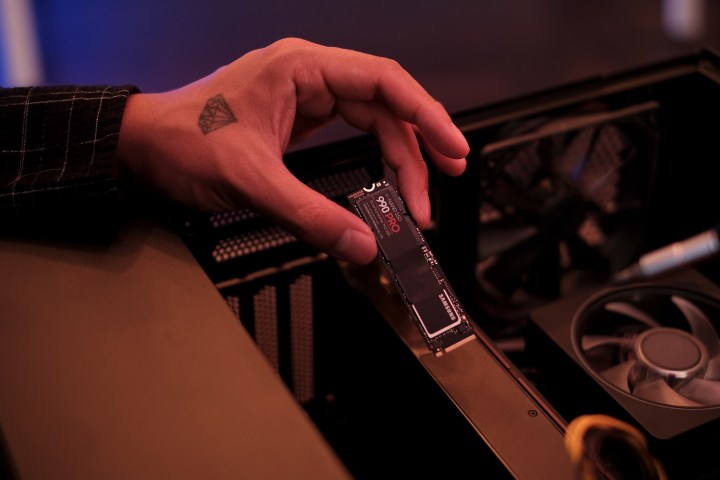
When it comes to the budget side of things, you’ll find that SSDs have been getting cheaper for a few years now — to the point where HDDs are almost no longer worth buying. Your typical run-of-the-mill PCIe 3.0 NVMe SSD costs around the same as an HDD, and that makes the SSD an obvious choice. However, there’s a lot of variety between different form factors and speeds.
Instead of splitting this up into budget brackets, let’s take a look at different types of SSDs and how much you might expect to pay, as there’s a lot of overlap.
SATA SSDs
A quick look through
tells us that SATA SSDs, while slower, aren’t really cheaper than their faster NVMe counterparts. At 1TB, you might expect to pay anywhere from $30 to $50 for a SATA SSD. The final price depends on the brand and read/write speeds. Smaller, 512GB SATA SSDs cost around $20 to $45.
This shows that you’re better off getting an NVMe SSD if your PC supports it, as the next two sections will illustrate.
PCIe 3.0 NVMe SSDs
An older, PCIe 3.0-only SSD model isn’t much cheaper than its PCIe 4.0 counterparts, but the price range is a lot wider than in the case of the SATAs. Premium-quality drives like the Samsung 970 Evo Plus cost
, but you can also get a Team Group SSD for
, and some models cost even less than that.
And 512GB PCIe 3.0 SSDs aren’t much cheaper, with options ranging from $28 to $50. It’s usually worth the extra expense to go for 1TB or more.
PCIe 4.0 NVMe SSDs
Upgrading to a faster PCIe 4.0 SSD will cost you a little extra. Some of the top gaming SSDs sell for around $60 to $80 if you’re buying a 1TB model, but you can find cheaper options for around $40. At this point, the jump from PCIe 3.0 to PCIe 4.0 is not going to feel quite as drastic as upgrading from an HDD, so you can save a little money and stick to older-gen SSDs. However, that extra $20 is usually worth spending if it means buying a drive from a reputable brand, such as
.
Pick the SSD that best suits your needs
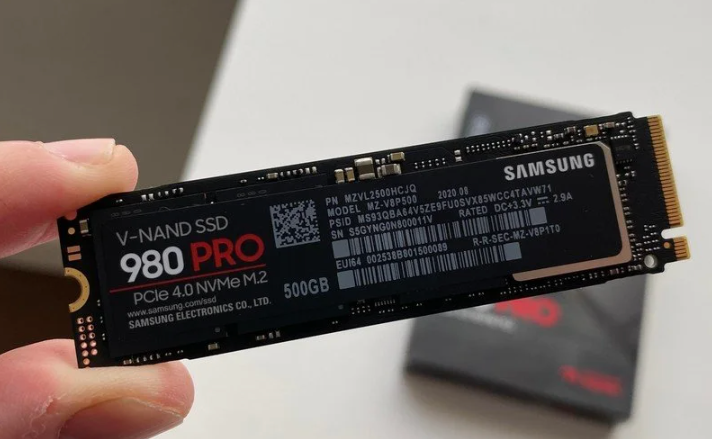
Picking the right SSD for you can be tricky. It’s easy to end up spending more than you initially planned to, and although the difference in price is usually small (and worth it), it doesn’t always translate to an outstanding increase in performance. Going from a read speed of 5,500MB/s to 6,000MB/s won’t feel like anything much, but switching from an old HDD with 80MB/s to just about any SSD is mind-blowing. Everything between that is nice, but not as drastic.
When you shop for an SSD, start by determining the form factor — that will tell you the options that are available to you. It’s always best to buy a larger SSD than you think you need, but only up to a certain point — buying anything above 2TB is pretty expensive and usually not worth it.
Once you know the form factor and the capacity, look for the highest read/write speeds you can afford, but don’t spend an extra $20 for a tiny increase if you’re on a budget. You won’t even feel it, and that money is better spent on a better power supply or cooler if your computer requires it.
Ultimately, spending just a little bit more can get you something that’s considerably better, so shop wisely and take a little time to dig into the specs before you settle on an SSD.
Editors’ Recommendations
How to pick the best PC case for your needs in 2023
Why new SSDs are melting down, and how to protect yours
MacBook Pro M2 Pro/M2 Max buying guide: how to make the right choice
The Samsung 990 Pro SSD is built for PS5 and DirectStorage
SK Hynix might dethrone Western Digital with this SSD
>>> Read full article>>>
Copyright for syndicated content belongs to the linked Source : Digital Trends – https://www.digitaltrends.com/computing/ssd-buying-guide/































